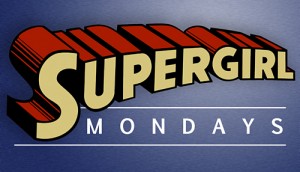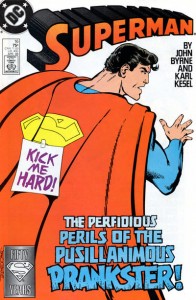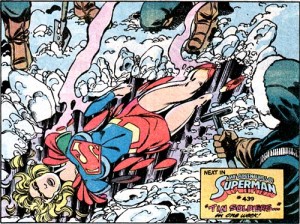 As Supergirl takes flight in her newest incarnation in the form of her first live-action television show, I thought it would be interesting to take a look back at an era for the character that is not only one of the most divisive, but also likely will be, in time, one of the most historically ignored: the post-Crisis Supergirl.
As Supergirl takes flight in her newest incarnation in the form of her first live-action television show, I thought it would be interesting to take a look back at an era for the character that is not only one of the most divisive, but also likely will be, in time, one of the most historically ignored: the post-Crisis Supergirl.
Coming into comics with the death of Superman, “Funeral For a Friend” and “Reign of the Supermen,” the post-Crisis incarnation of Supergirl also is one that cemented a love of the character that, for me, is nearly as strong as my love for Superman. And while there are podcasts, blogs and Tumblrs, centered on this era of Superman comics, none have done so with a specific focus on Supergirl’s story.
So to that end, we begin Supergirl Mondays, a weekly issue-by-issue retrospective of the Maid of Might’s story in the post-Crisis universe. Each Monday, before the airing of “Supergirl” on CBS, take a look back at the the earliest days of the incredible, winding and, yes, at times, somewhat confusing journey of the all-new, all-different Supergirl.
While DC Comics’ copyrighting of the Supergirl name goes back to 1944, and a few of female characters calling themselves Supergirl (or even Superwoman) appeared throughout the next 15 years, the most well-known version of the character, Kara Zor-El, Superman’s Kryptonian cousin, debuted in ACTION COMICS #252 (cover date May 1959) in “The Supergirl From Krypton,” which was written by Otto Binder and illustrated by Al Plastino.
The character was an immediate success and went on to fill the back-up slot in that book for more than a decade. She then moved over to headline DC’s long-running ADVENTURE COMICS in 1969, where she stayed until getting her own self-titled, although short-lived, book in 1972. As comics moved into the Bronze Age, Supergirl shifted into a recurring spot in the then-new SUPERMAN FAMILY, her guest appearances in Superman-related stories increased exponentially, and she was given her own self-titled book in 1982.
Unfortunately, despite also starring in her own big-screen movie in 1984 (a move spurred on by the success of the Christopher Reeve series of Superman films), the character’s fate was sealed with DC’s landmark CRISIS ON INFINITE EARTHS in 1985 when DC editorial chose to kill the character in an iconic moment for the series and DC history. In the wake of that series, Superman’s history was rewritten, and Kara Zor-El no longer existed as DC sought to return Superman to being the sole survivor of Krypton.
But, despite the new editorial direction, the disappearance of Kara Zor-El didn’t mean Supergirl was gone forever.
Issue: SUPERMAN (Vol. 2) #16
Cover date: April 1988
Cover price: 75 cents ($1 Can./40p U.K.)
Cover by John Byrne
Story: “He Only Laughs When I Hurt!”
Story and pencils by John Byrne
Inking by Karl Kesel
Coloring by Tom Ziuko
Lettering by John Costanza
Editing by Michael Carlin
Superman created by Jerry Siegel and Joe Shuster
After the main story details Superman’s inaugural run-in with Oswald Loomis, a.k.a. the Prankster, an epilogue takes us to later that night in Antarctica where heat sensors alert a group of U.S. Navy scientists of something buried within the ice. Investigating further, the men are stunned by what they find.
I can only imagine what readers of the time — especially those who had been reading the books since before the reboot and, perhaps, still were mourning the loss of a much-beloved character — thought of this shocking end.
Is this Kara Zor-El returned somehow? A new character? A hoax? A dream? An imaginary story?
Adding to the mystery is Byrne’s redesign of the costume, which with exceptions of the lack of a headband and touch of red on her shoulders — and the hardly noticeable red piping on the top of her boots rather than yellow, is essentially the same as the final costume worn by Kara.
It’s an interesting way to begin the story of a new Supergirl, that much is sure.
Next time on Supergirl Monday: The mystery deepens.


